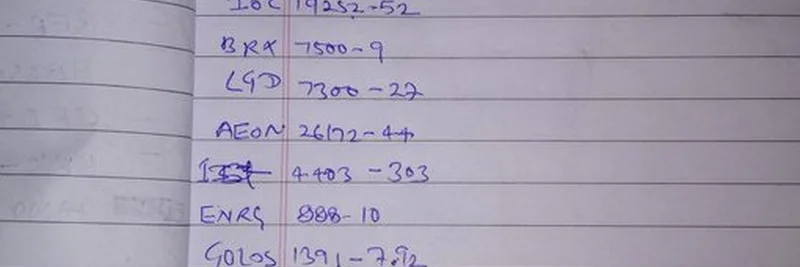Hey there, crypto enthusiasts! If you’ve ever wondered how the wild world of altcoins evolved, buckle up for a fascinating trip back to 2017. A recent post on X by hitesh.eth shared a gem: a trader’s handwritten notes detailing altcoin purchases from late 2017, all tracked in sats (short for satoshis, the smallest unit of Bitcoin). This peek into the past sheds light on a unique trading mindset and raises some intriguing questions about how we value crypto today.
What Are Sats, Anyway?
For those new to the crypto scene, a satoshi is to Bitcoin what a cent is to a dollar—1 BTC equals 100 million sats. Back in 2017, when Bitcoin’s price was skyrocketing, many traders focused on how many sats an altcoin was worth rather than its dollar value. This approach highlighted Bitcoin’s dominance and made it the benchmark for all other cryptocurrencies. The notes, scribbled in a notebook, list altcoins like POT, SLS, and EXCL with entries like "1997-2237" or "14255-51," showing buy and sell points in sats.
Why Sats Mattered in 2017
Imagine a time when Bitcoin was the king of crypto, and altcoins were the exciting new kids on the block. The trader’s focus on sats reflects a community obsessed with Bitcoin’s growth. Dollar prices were secondary because Bitcoin’s volatility meant sats offered a more stable relative measure. For example, if Bitcoin jumped from $1,000 to $2,000, an altcoin’s dollar price might look inflated, but its sat value could stay consistent, giving traders a clearer picture of its worth.
This handwritten log is a time capsule. It shows a hands-on approach—no fancy apps or exchanges—just pen and paper tracking trades. The fun fact? Most people back then didn’t even bother converting these values to dollars, a stark contrast to today’s market where USD pairs are standard.
How This Mindset Influences Today’s Trading
Fast forward to 2025, and the crypto landscape has evolved. The replies to hitesh.eth’s post, like those from HODLguin and GIGA, spark a great debate. Does that 2017 sat-focused mindset still linger? Some argue it does, especially among Bitcoin maximalists who see BTC as the ultimate store of value. Others point to stablecoins like USDT, which have shifted focus back to dollar-based trading, offering stability amid crypto’s wild swings.
Trading in sats encouraged a long-term holding strategy, as seen in the trader’s detailed records. Today, this could inspire meme coin enthusiasts or DeFi practitioners to look beyond short-term hype and evaluate tokens against Bitcoin’s strength. It’s a reminder that understanding historical context can sharpen your trading game!
Lessons for Meme Token Investors
At Meme Insider, we love digging into trends that shape the meme token world. This 2017 snapshot teaches us a few things:
- Focus on Relative Value: Just like sats, compare meme tokens to Bitcoin or top coins to gauge real potential.
- Track Your Trades: Handwritten or digital, keeping a log helps spot patterns—perfect for navigating meme coin volatility.
- Learn from History: The 2017 altcoin boom (and bust) mirrors today’s meme coin cycles. Patience can pay off!
So, next time you’re eyeing a new meme token, think about its sat value or how it stacks up against Bitcoin. Who knows? You might uncover the next big thing, just like those 2017 traders did.
What do you think—should we bring back sat-based trading for meme coins? Drop your thoughts in the comments, and let’s keep the conversation going!




